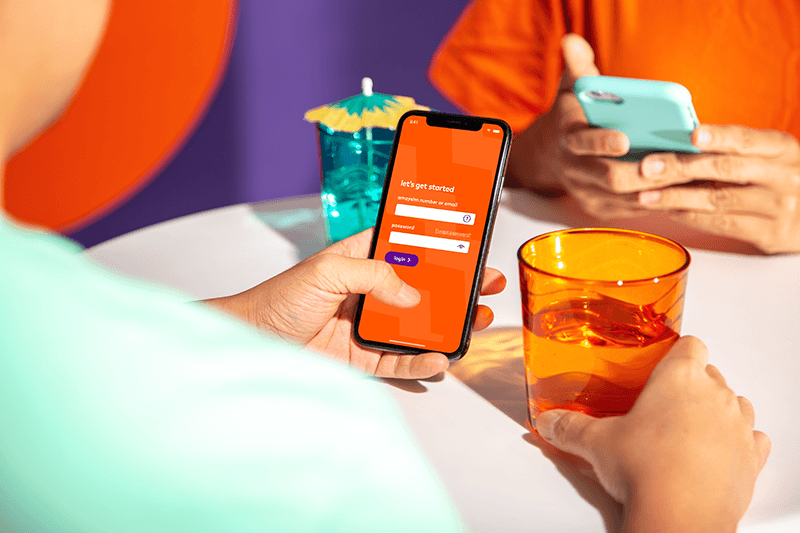
8 Things to Consider When Choosing Kids Phone Plans
01 May 2022
Whether you’re looking to get your child their first phone or upgrade their current plan, wading through all the options to choose the best kids mobile plan is no easy task for parents and guardians.
Of course, you want a kid’s SIM card with enough calls and coverage to keep them connected with friends and family – but you don’t want expensive data add-ons or hidden charges (especially if you’re the one paying the bill!)
So, how do you find such a plan? The first step is to know what you’re looking for, which is why we’ve created this guide to help you choose the best kids phone plans for your family in 2022.
1. Consider what your child needs
When looking for mobile plans for kids and teenagers, it’s important to consider what they actually need. This will be affected by their age. The main aim for young kids may be to allow them to contact you via calling or texting, and you might want to restrict their access to the internet. Meanwhile, teenagers will often use their phones primarily for the internet.
Different generations also use their phones differently. For you, it might be important that your phone offers plenty of call time and the ability to check emails; but for your kid, it is probably more important to have enough data to support their social media and apps. Make sure you decide what they need to stay connected before choosing a kid’s phone plan.
2. Look at prepaid
Prepaid plans are a popular option for kids and teenagers, as they are more flexible and eliminate the chance of your child going over budget. These plans let you purchase pre-paid credit (from stores or online) whenever you need it. By paying for your kid’s SIM card upfront, you can feel reassured that you won’t be receiving a surprise bill at the end of the month.
When choosing a prepaid plan, make sure that the expiry period is monthly, rather than weekly or every 10 days, to prevent charges from quickly adding up. These amaysim prepaid mobile plans renew every 28 days and are perfect for children.
Whilst we recommend prepaid phone plans for kids, post-paid plans can sometimes offer better value – providing you don’t exceed your allowances. If you decide to go for a post-paid plan, look for one which warns you when you’re getting close to the monthly data cap – for example, with an SMS alert – and which charges low or no fees for exceeding your data limit.
3. Choose unlimited calls and texts
Of course, one concern with a prepaid plan is that your child might use up their allowance and not be able to contact you in an emergency. However, a plan with unlimited talk, SMS and MMS, such as our prepaid Unlimited 6GB SIM, means your child will always be able to call or text you, even if they run out of data. We recommend this as one of our best phone plans for kids.
4. Decide on an appropriate data allowance
The amount of data your child needs will depend on how they’re using their phone. As a general rule, 2GB of data should be enough for basic web browsing and messaging apps. If they are running data-intensive apps such as YouTube and TikTok, it may be a good idea to get more.
“When looking for a mobile phone plan for my children, I’d be looking for a plan that offers lots of data for a reasonable price, and no hidden extras! So, if they do happen to get close to their monthly allowance, they’re unable to get any more data without parental consent. It’s a good way for them to learn to budget data too!”
Rachel Chappell – Founder of North Shore Mum’s
5. Think twice about buying the most expensive phone
Sure, your teenager might be begging for the latest iPhone, but do they need it? A lot of the key features you find in flagship phones will appear in other, less expensive models. The Samsung Galaxy A series, for example, offers a more budget-friendly smartphone alternative. You could also consider a refurbished or second-hand phone – just make sure the battery life is still up to scratch.
If you’re giving your child a phone primarily so that you can stay in touch and be contactable in emergencies, they really may not need a top-of-the-line device. For very young children, a cheap phone that does not offer internet access may suffice – something like the Nokia 3310.
Expensive phones are also expensive to replace if they get stolen, lost or damaged, so if you do decide to purchase a pricier phone for your child – either outright or bundled into a plan – make sure you have insurance.
6. Create healthy schedules
Something else to consider with kids phone plans is whether you can limit their usage. Some phones will have settings like ‘bedtime’ mode, which lets you block all data usage during set periods. This will be important to a lot of parents who worry about their children staying up late or screens disrupting their sleep.
Some mobile plans for kids offer access to cybersecurity features that allow parents to track their child’s whereabouts and monitor their activity online. If you’re concerned about your kid being safe online, this could be something to look at.
There are also physical options to limit usage, such as taking your kid’s SIM card out of their phone, or getting them to leave the phone in a basket outside their bedroom after bedtime – but built-in limitations and controls can feel less intrusive and easier to manage.
7. Research family plans
For convenience, some providers offer family plans, with two or more handsets on the same bill. You can group your mobile phone plan with your kid’s mobile plan, or if you have multiple children with phones, you can group them together.
At amaysim, you can group as many numbers as you need under one account. This lets you easily manage payments and account settings for your own mobile number and your kids’ phone plans from the same place. Get your family connected today!
8. Shop around for kids phone plans
Now that you’ve outlined exactly what you need for your kid’s mobile plan, it’s time to shop around to find the best deal. Each telco or provider will offer slightly different plans for varying prices, and will also run time-sensitive promotions, so it is worth comparing your options at the time of purchase.
For top-rated, great-value plans that are free from lock-in contracts, check out amaysim mobile plans. They’re powered by the Optus 4G Mobile Network and include unlimited talk and text across Australia – just choose how much data you need for your child and you’re good to go.
FAQs
What is the best kids mobile plan?
The best phone plans for kids are those with unlimited calls and texts, as this means they will always be able to contact you. Look for a plan with at least 2GB of data, which will allow them to use messaging apps and web browsing. For teenagers who are using their phones for social media and video streaming, you can add more data.
What SIM card is best for kids?
We recommend our Unlimited 6GB prepaid SIM as the best SIM card for kids. It comes with unlimited calls and texts, enough data to keep them online, and unlimited data banking, meaning they can rollover any unused data to the following month. For older teenagers, you could upgrade this to our Unlimited 30GB prepaid plan, which might be the best phone plan for kids with a TikTok addiction.
What phone plan is best for an 11-year-old?
The best mobile plan for kids of 10 or 11 is our prepaid Unlimited 2GB SIM. This highly affordable, simple starter plan gives your child access to unlimited calls and texts, and sufficient data for basic web browsing. At 11, you may still want to limit the amount of time your child spends online, and there is no point in paying for data they do not use. You can upgrade the plan at any time as their data needs increase.
Should children use mobile phones?
The question of whether kids should have mobile phones is a tricky one. Some people feel that allowing children to spend too much time in front of a screen can be harmful to them. It is common knowledge that our phones – particularly social media apps – are designed to be addictive, and can expose children to online threats, such as cyberbullying or grooming.
However, there are some clear advantages to children having a mobile phone. They can contact you in an emergency, they can keep in touch with friends and family, they have a constant source of entertainment, and they can keep up with modern technology, which may help them in their careers in later life.
It is also hard to deny that getting your child a phone means they will be in line with their peers. A recent study found that 80% of 12 and 13-year-olds own or have access to a mobile phone, and this number is only likely to increase.
Ultimately, as a parent, it is your decision whether to give your child a phone. If you have concerns, it can be a good idea to discuss these fears with your kid, to make them aware of the potential dangers and drawbacks of phones. Opening an honest dialogue with your child may also encourage them to come to you if they do encounter any problems online.


